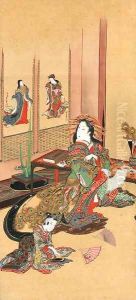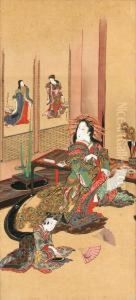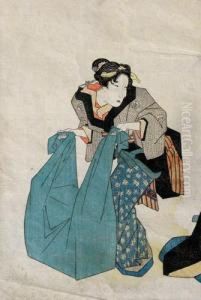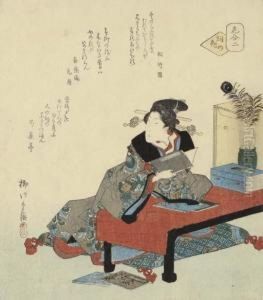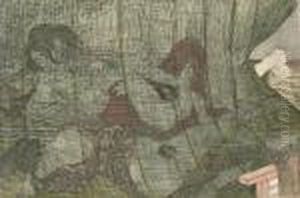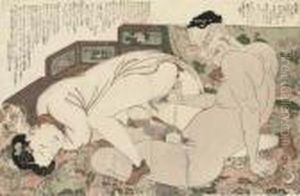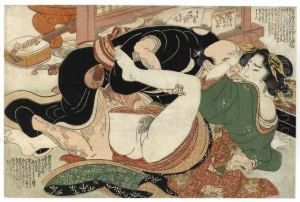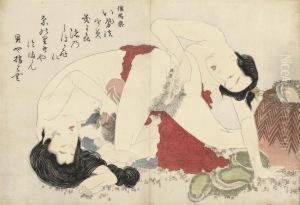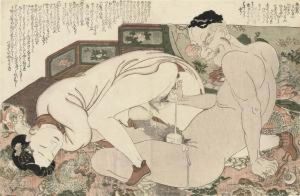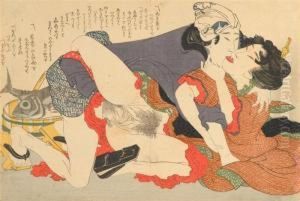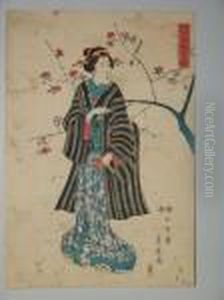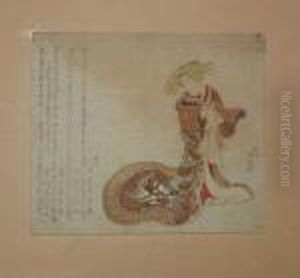Yanagawa Shigenobu Paintings
Yanagawa Shigenobu was a prominent Japanese ukiyo-e artist, known for his detailed and vibrant woodblock prints. Born in 1787, Shigenobu was initially named Yanagawa Shigeaki, and he was the son of Yanagawa Shigenobu I, an artist who worked in the Hokusai school. This lineage placed him within the sphere of influential artists from an early age, providing him with a rich environment to develop his artistic skills.
Shigenobu moved to Edo (modern Tokyo) where he became a student and later an important member of the Hokusai school. Under the tutelage of Katsushika Hokusai, one of the most famous artists of the Edo period, Shigenobu honed his skills in depicting a wide range of subjects, including landscapes, portraits of beautiful women (bijin-ga), and historical and mythological scenes. His works are characterized by their intricate details, vivid colors, and dynamic compositions, which were innovative at the time and contributed to the development of the ukiyo-e genre.
In 1821, Shigenobu adopted the name Yanagawa Shigenobu II, after his father's death. He continued to produce a prolific amount of work, which included book illustrations and single-sheet prints. One of his notable contributions to the art world was his involvement in the production of 'surimono' (privately commissioned prints), which were often more detailed and luxurious than commercial prints, intended for a more discerning audience.
Despite his contributions to the ukiyo-e movement and his association with Hokusai, Shigenobu's work did not gain the same level of recognition as some of his contemporaries during his lifetime. However, in the years following his death in 1832, his art has been re-evaluated and is now celebrated for its quality and the artist's unique style. Today, Yanagawa Shigenobu's prints are considered important examples of late Edo period ukiyo-e art, and they continue to be studied and admired for their beauty and historical value.
